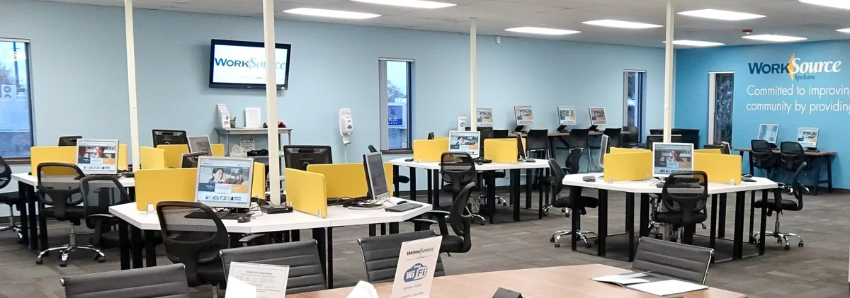WorkSource Spokane is designed with the customer experience in mind.
With the passage of the Workforce Innovation and Opportunity Act of 2014 (WIOA), we were afforded more freedom to organize and design WorkSource Spokane than ever before.
In early 2016 we began an in-depth review of the customer experience and began work on a complete transformation of the center, physically and functionally. By the close of 2017 the center had been remodeled and re-organized to maximize the customer experience and make the staff more effective in their work.

Physical Redesign
Greeter Area
Before/After
Before/After
Lobby
Technology Hub
Before/After
Functional Redesign
Staff work stations have been re-organized around functional teams rather than programs. For example, in the old system two different people looking for work might receive two completely different types of service depending on which program they were eligible for. This led to inconsistent service as different staff members would assess needs, make résumé recommendations, and find job leads in different ways.
Now any two people who walk in the door will receive the exact same service, while specific program eligibility is handled in the background. All customers start out at the Success Desk with access to career coaches. Those who need additional assistance have access to one-on-one coaching as well as various workshops and training opportunities.
